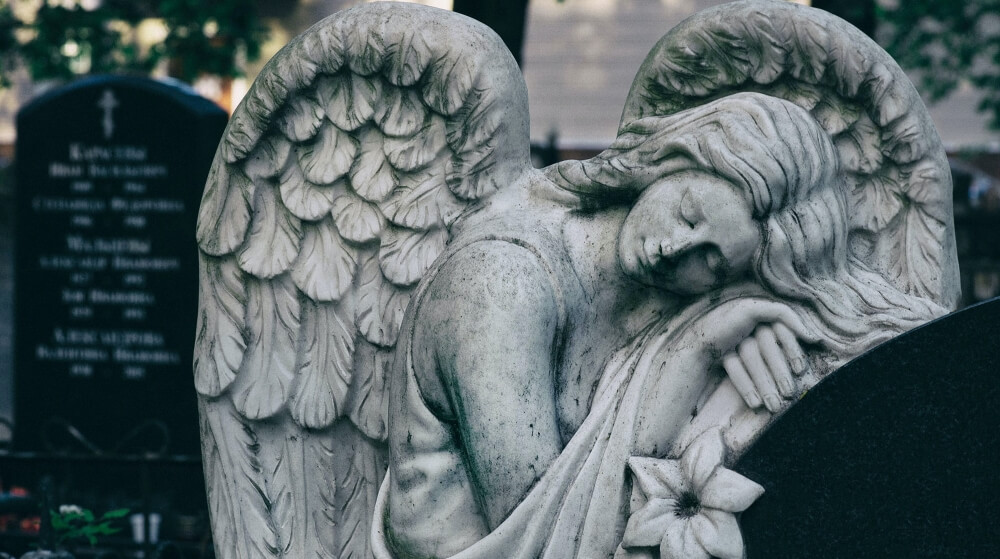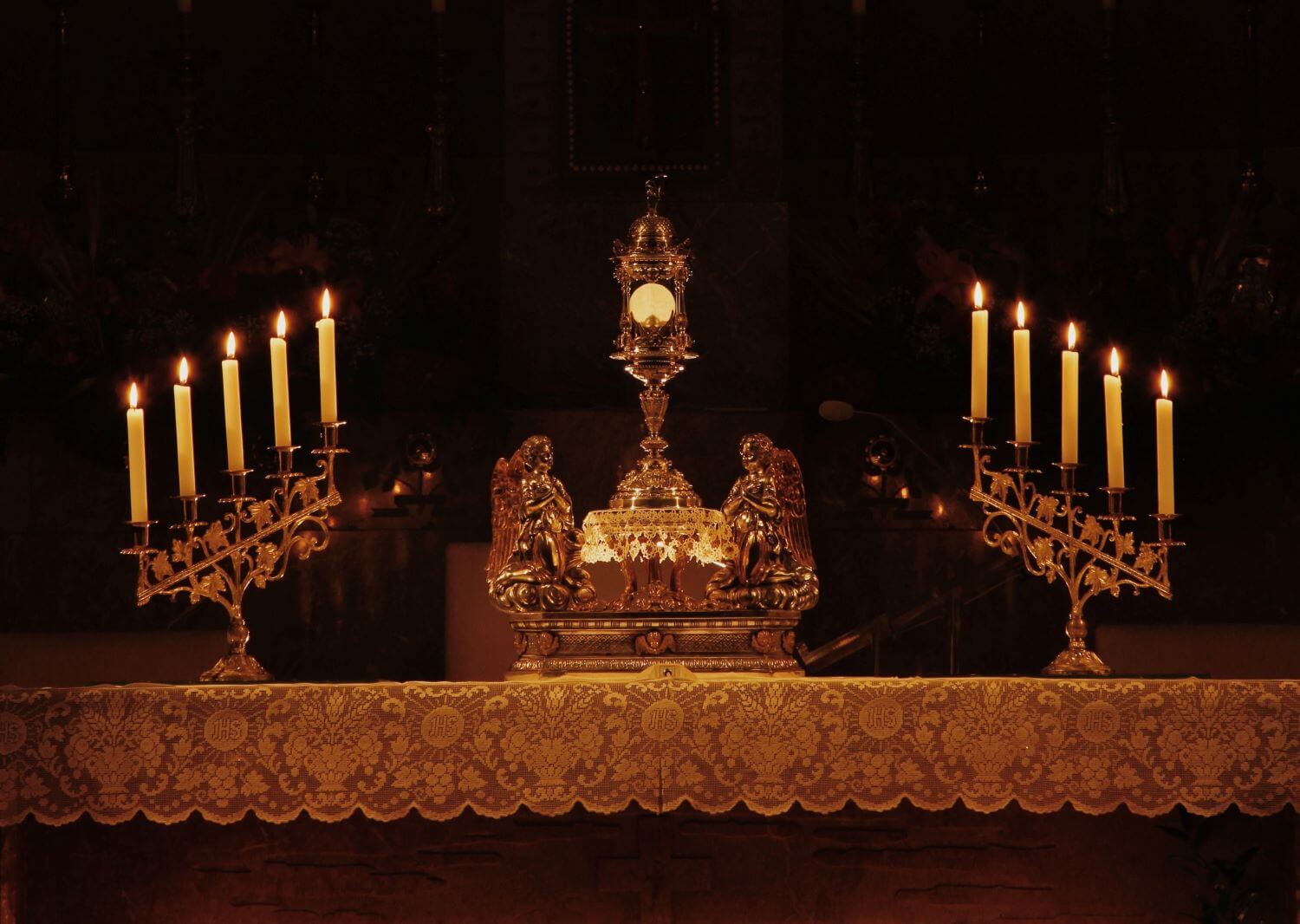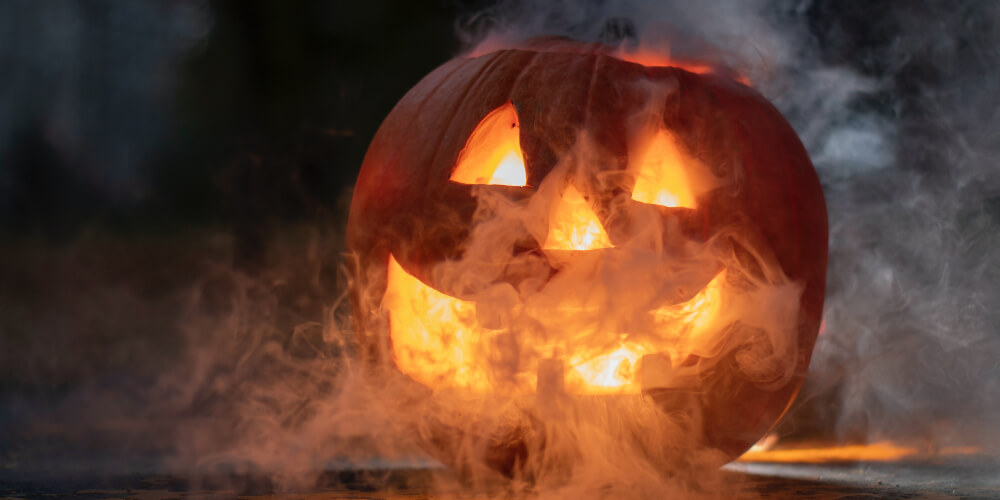
It’s the most controversial question of the season:
“Can Catholics celebrate Halloween?”
And it’s often accompanied by another question: “Isn’t Halloween a pagan holiday with roots in the occult?”
Unfortunately, Catholic friends—and various Catholic websites—often give contradictory answers.
“Halloween is totally evil!”
“Halloween is totally fine!”
“Halloween does have pagan roots, but we can baptize it and make it something nice!”
None of those statements are quite correct.
The correct answer is that the true and original substance of Halloween belongs to the Catholic Church.
This article will tell you why and how.
Is Halloween a Catholic Holiday?
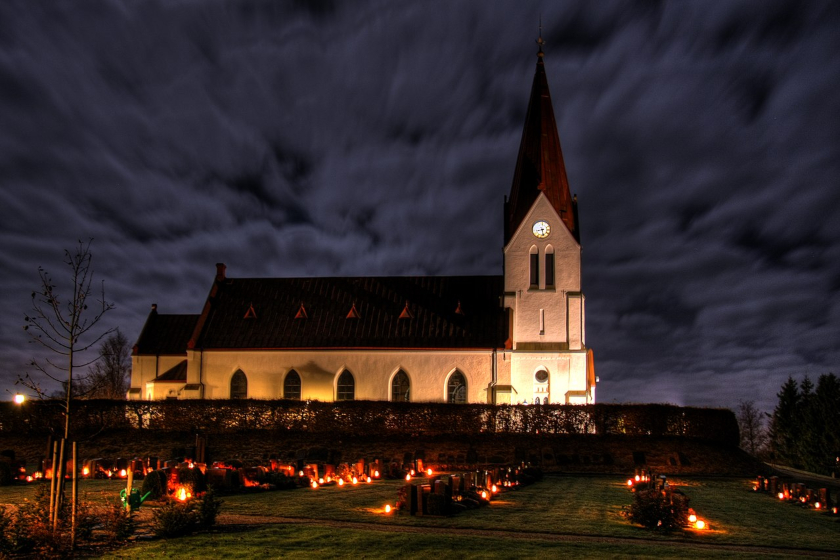
Is the holiday known as “Halloween” Catholic?
The first happy hint is in the word “holiday.” Holiday comes from the word “Holy Day”—that is, from the holy celebrations and feasts of the Church.
Yes, Halloween is Catholic.
As noted above, however, it is the “true and original substance” of Halloween that is Catholic.
The violence, gore, sensuality, occultism, and demonic aspects now associated with Halloween are not, in fact, true to its origins. They aren’t really Halloween at all, although retailers and the entire world of consumerism have made them so for the culture at large.
The current version of Halloween is actually a recent development in the context of history. It started out innocently enough: just fun costumes and trick or treating.
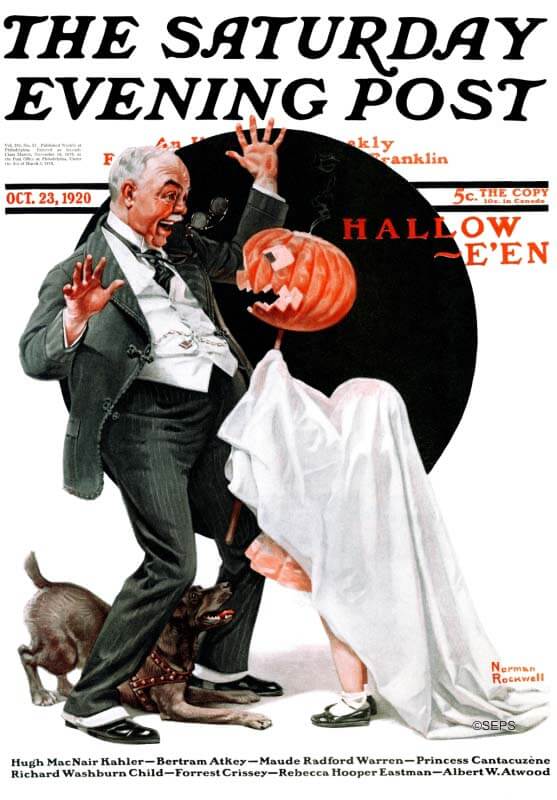
It didn’t stay fun and innocent, however. And the results are rather tragic. When we separate something from its religious context, it quickly takes a turn for the worse.
Christians and non-Christians now fail to realize that Halloween is a hijacked holy day. Both are convinced it has pagan origins.
The result is that Catholics react in one of three ways. They either 1) go with the flow, celebrating Halloween in a secular way and not giving the holiday much thought or 2) insist that Halloween should not be celebrated at all or 3) insist that Halloween needs to be “baptized” and turned into a harmless holiday. (Then we can at least enjoy the candy, right?)
But these responses don’t tell us where Halloween came from and why it’s worth rescuing.
What’s true—and false—about the origins of Halloween?
First, the facts.
Then a guide on how to celebrate Halloween as a Catholic.
What IS Halloween?
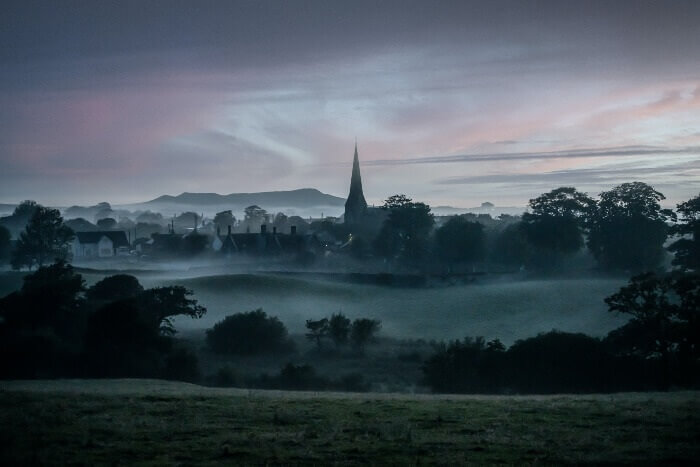
- The word “Halloween”—or “Hallowe’en”—comes from All Hallow’s Eve.
- All Hallows Eve is the vigil celebration of All Saints Day—also known as All Hallows Day.
- The word “hallow” means “holy.” (In the Our Father we pray, “Hallowed be thy name.”)
- All Saints Day is a Holy Day of Obligation, and a major feast on the Church’s liturgical calendar.
- All Saints Day honors not only the saints in heaven whom we know by name, but also the countless saints in heaven whose names are unknown to us.
The exact origins of [All Saints Day is] uncertain, although, after the legalization of Christianity in 313, a common commemoration of Saints, especially the martyrs, appeared in various areas throughout the Church…
Fr. William Saunders, “All Saints and All Souls”
The primary reason for establishing a common feast day was because of the desire to honor the great number of martyrs, especially during the persecution of Emperor Diocletian (284-305), the worst and most extensive of the persecutions. Quite supply, there were not enough days of the year for a feast day for each martyr and many of them died in groups. A common feast day for all saints, therefore seemed most appropriate.
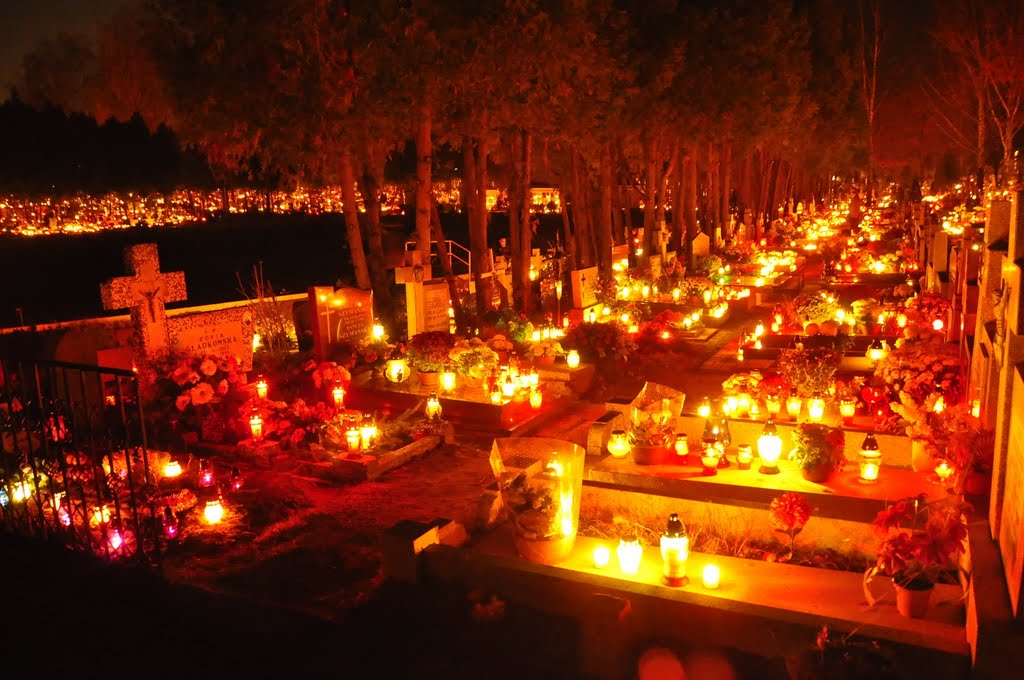
- All Souls Day is on November 2nd.
- These three days taken together—October 31st, November 1st, and November 2nd, which celebrate the major feast of All Saints Day and the smaller feast of All Souls Day—are the “Days of the Dead,” a triduum of feasts also called Allhallowtide, Hallowtide, or Hallowmas (Hallow meaning holy and mas meaning Mass).
- Halloween is, therefore, the first day of Allhallowtide, the time of year when the living (the Church Militant) honor all the dead in Christ: the saints in heaven (the Church Triumphant) as well as all the holy souls detained in purgatory on their way to heaven (the Church Suffering). It is a beautiful celebration of the Communion of Saints!
Why is Halloween on October 31st?

- Pope Gregory III (731–741) transferred the Feast of All Saints from its former day on May 13th to November 1st to coincide with the foundation of a new chapel in St. Peter’s Basilica which he dedicated to all the saints in heaven.
- Halloween is on October 31st because All Saints Day is November 1st. As Catholics, we really know how to celebrate: we do “vigils.” Vigils are when important feasts begin the night before the feast itself. If you pray the Liturgy of the Hours (Divine Office) you will see that the prayers for these big feasts begin the evening prior, as though the feast had already arrived.
- It was customary in historic Catholic Europe to have these evening vigils with pious celebrations; the rhythms of people’s lives and culture moved with the liturgical calendar. This explains why Halloween exists at all. Even today, Catholics begin celebrating major feasts the evening before the big day. Christmas has Christmas Eve. All Hallows Day has All Hallows Eve.
Remember, the calendar of the Church is filled with festival days, all of which were once associated with great, public celebrations.
“It’s Time for Catholics to Embrace Halloween” by Fr. Steve Grunow, Word on Fire CEO
A holy day of obligation has not always meant spending 45 minutes in church for Mass and then going back to work.
Holy days were times for a party, and if you look at the Church’s calendar, past and present, with this ethos in mind you will discover that the reasons for a party happened with great frequency.
Why do Catholics celebrate “The Days of the Dead”?
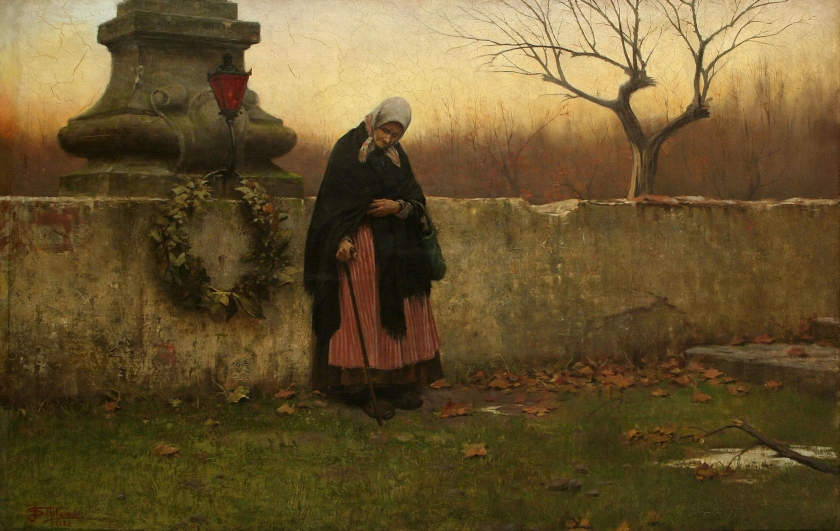
- Pope Gregory IV (827–844) later extended the Feast of All Saints—which was previously just a local feast in Rome—to the universal Church. That is how the eve of All Saints Day (Halloween) came to be celebrated by Catholics around the world in their own cultural ways.
- Celebrating these Christian holy days helps remind the faithful of the reality of heaven and hell, the saints and the damned, demons and angels, and the holy souls suffering in purgatory. It reminds us that life is short and we should use our time wisely. Memento mori, say the saints and sages. “Remember your death.”
Read More: Memento Mori – Remember Your Death
- This time of year also reminds us to pray for the souls of the deceased. It is a reminder that we, too, will one day die, and should always strive to live good and holy lives so that we can be ready to enter eternity and stand before God.
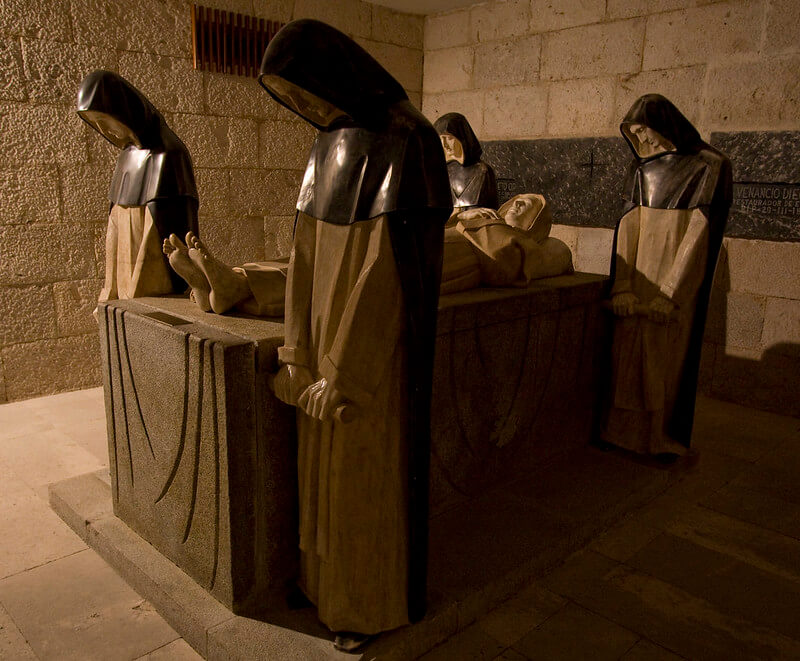
Photo Credit: Fr. Lawrence Lew, O.P., Flickr, CC BY-NC 2.0
[Various] customs have arisen over time in the celebration of All Souls Day. The Dominicans in the 15th century instituted a custom of each priest offering three Masses on the Feast of All Souls. Pope Benedict XIV in 1748 approved this practice, and it rapidly spread throughout Spain, Portugal and Latin America. During World War I, Pope Benedict XV, recognizing the number of war dead and the numerous Masses that could not be fulfilled because of destroyed Churches, granted all priests the privilege of offering three Masses on All Souls Day: one for the particular intention, one for all of the faithful departed, and one for the intentions of the Holy Father.
Other customs have developed regarding All Souls. In Mexico, relatives make garlands, wreaths and crosses of real and paper flowers of every color to place on the graves of deceased relatives the morning of All Souls. The family will spend the entire day at the cemetery. The pastor will visit the cemetery, preach and offer prayers for the dead and then bless the individual graves. “Skeleton” candy is given to the children.
Similar practices occur in Louisiana. The relatives whitewash and clean the tombstones and prepare garlands, wreaths and crosses of real and paper flowers to decorate them. In the afternoon of All Saints, the priest processes around the cemetery, blessing the graves and reciting the Rosary. Candles are lit near the graves at dusk, one for each member of the deceased. On All Souls day, Mass is usually offered at the cemetery.
Rev. William Saunders, “All Saints and All Souls,” Arlington Catholic Herald
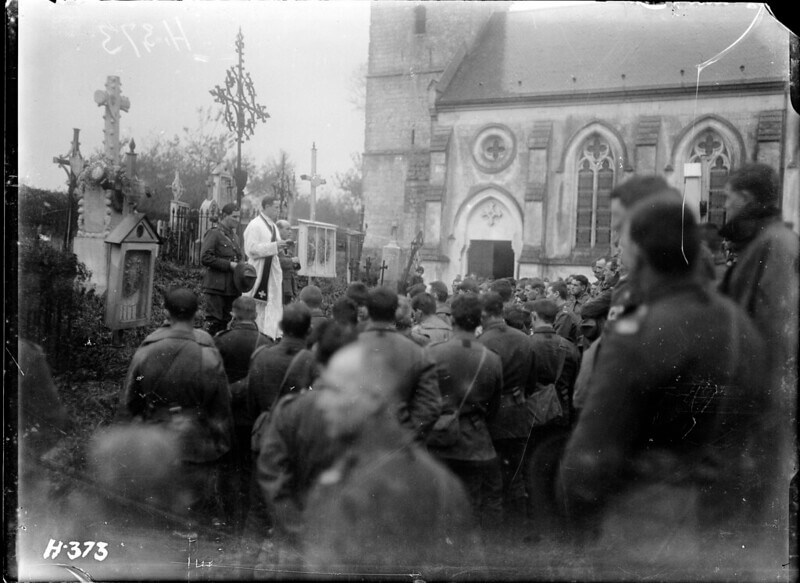
Is it true that the Catholic celebration of Halloween has pagan roots?
- Halloween does not have origins in paganism, Samhain, Druidic festivals, the occult, or Satanism. This common misconception is relatively new anti-Catholic propaganda, with roots going back to the Protestant Reformation.
[T]he first attempts to show some connection between the vigil of All Saints and Samhain came over a thousand years after All Saints Day was named a universal feast. There’s no evidence whatsoever that Gregory III or Gregory IV was even aware of Samhain. The pagan festival had stopped being celebrated when the Celtic peoples converted to Christianity hundreds of years before the Feast of All Saints was instituted.
“Should Catholics Celebrate Halloween?” by Scott P. Richert, M.A., Senior content network manager of Our Sunday Visitor
The “Dance of Death“depicted in medieval art. This art was a reminder that no one lives forever, and that we should remember our death and live in a way that makes us unafraid to die and ready to meet Christ our Judge.
Many people see the coincidence of dates between Samhain (an ancient Celtic festival about which little is known) and All Saints Day and presume a connection. However, Samhain was a geographically-isolated cultural focus that would not have been recognized by the world at large (no internet or social media back then, folks!) and, more importantly, the Celts used a different “calendar” than the Church did. There was no “October 31st” for the ancient Celtic pagans.
[W]e find the Church establishing a liturgical feast day in honor of the saints independent of any pagan influence.
Fr. William Saunders, “All Saints and All Souls”
Where did Halloween traditions come from, like Trick or Treating?
- English, Irish, and other immigrants brought their variety of local Catholic customs to America. Dressing up for Halloween may be rather untraceable as a custom—the truth is that as long ago as medieval times, people loved to dress up for various festivities; Jack-o-Lanterns come from the Irish, who originally carved turnips; the English begged from door to door for “Soul Cakes,” promising to pray for the departed loved ones of those who gave them these treats—thus the origins of trick-or-treating. These cultural traditions converged in the big American “melting pot” and eventually became popular nationwide activities for Halloween.

Where did misconceptions of Halloween come from?
- When European Catholics immigrated to predominantly-Protestant America, bringing cultural Catholic customs with them, these customs were denounced as pagan. (New England Puritans once banned the celebration of Christmas and Easter!) Keep in mind that certain of our Christian brethren consider the Rosary, the Mass, all sacramentals, the pope, and even you to be pagan! It makes sense that various traditions around All Hallow’s Eve would appear demonic to them.
[L]ike many other claims that Catholicism adopted pagan practices and beliefs, this myth is also based on bad research and propaganda that developed after the Protestant Reformation. Given the contempt of the reformers for the Catholic doctrine of purgatory and prayers for the dead, this development is not surprising.
“Halloween or Samhain?” by Jon Sorensen, Catholic Answers COO
- Unlike people today, who avoid the topic of death, our ancestors were very realistic and sober about it. They knew that death was unavoidable and could come at any moment—and they used this reality as a powerful moral lesson. The art depicting this (see below) was raw and real and filled with wry humor. Such artists looked death right in the face. Perhaps their ability to do this has been misunderstood by a generation that fears death above all things—even sin, which is not a Catholic attitude.
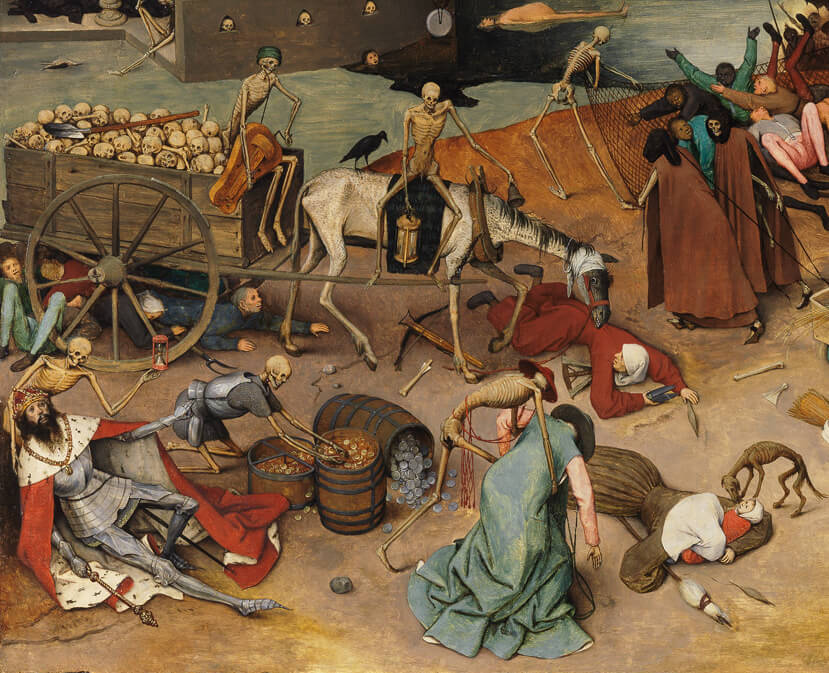
- All Hallows Eve has indeed been taken over by a secular culture—and it’s our fault for letting it happen. The contemporary version of “Halloween” that glorifies the demonic with an emphasis on violence, horror, and sensuality is—at least in part—a result of Catholics believing the propaganda against their faith and pulling away from the traditional and faithful celebration of this holy day.
What can we do, if Halloween has been hijacked?
- It is true that Halloween has been badly corrupted and hyper-commercialized, just like Christmas and Easter. However, just as that shouldn’t stop Catholics from fully celebrating these great feasts in the proper Catholic way, neither should it stop Catholics from enjoying Halloween as a vigil celebration of the great feast of All Saints.
Celebrate Halloween as a Catholic
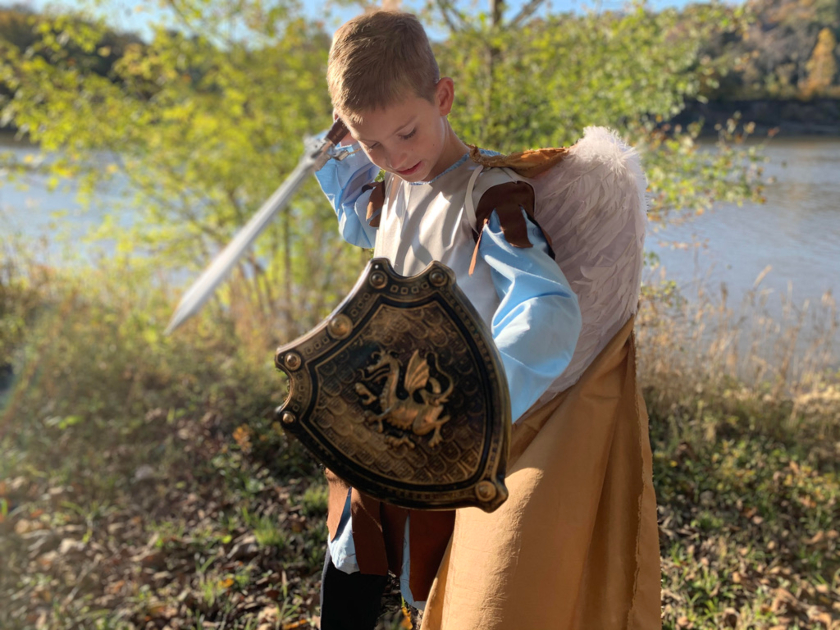
Catholics should not neglect the celebration of any of the Church’s major feasts. All Saints Day is no exception. It is a Holy Day of Obligation, meaning that Catholics are required to attend Mass just as though it were a Sunday.
To avoid superstition and the influence of the occult, Halloween should not be honored or celebrated apart from Catholic truth.
Fr. Steve Grunow said it best:
I think it is time for Catholics to accept the religious liberties that this culture claims to afford them and go public with their own festivals—and to do so dramatically and with a great deal of public fervor. What is holding us back? What are we afraid will happen? The reticence and fear that characterizes Catholics is costing the Church its unique culture and it is allowing the culture of death to flourish.
“It’s Time for Catholics to Embrace Halloween” by Fr. Steve Grunow, Word on Fire CEO
Allhallowtide is a time to reflect on Christ’s triumph over sin, death, and the devil; to meditate on our own mortality and duties to God; to shun sin, Satan, and all his works; to give honor to the saints in heaven; and to pray for the souls of the faithful departed in purgatory.
And, of course, to have fun with joyful feasting and merriment!
How to Celebrate Allhallowtide
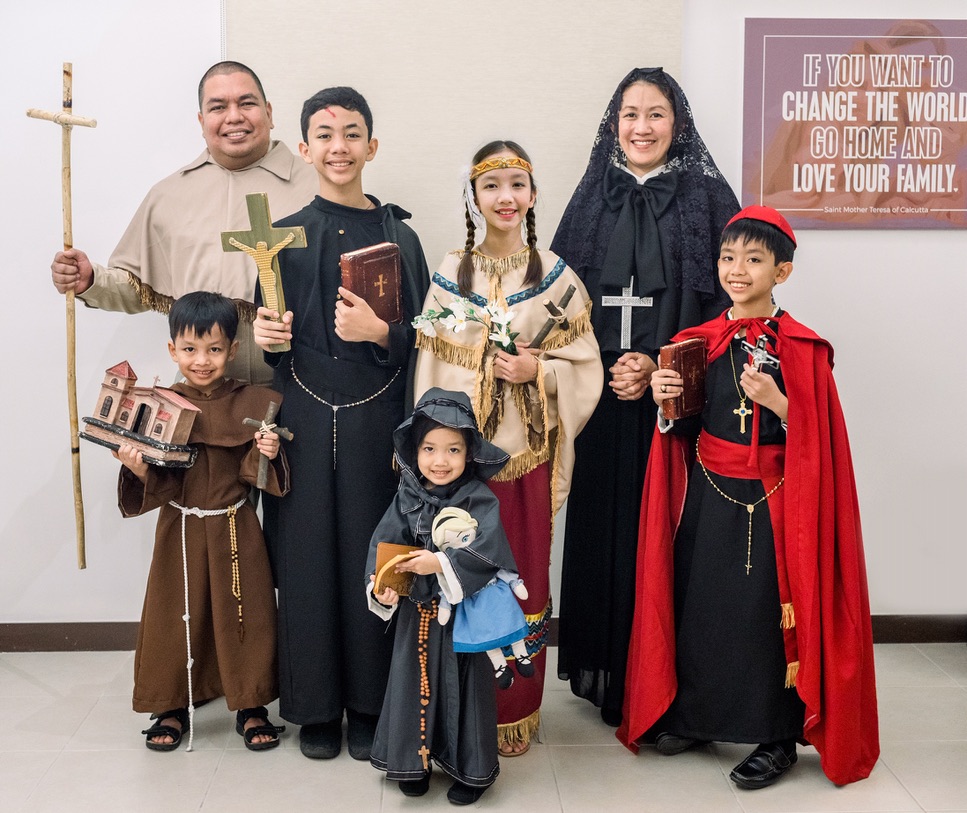
How to Celebrate Halloween:
- Try to get to Mass on All Hallow’s Eve.
- Pray for the intercession of the saints—especially those who are your patrons.
- Have a party with saint-based activities or costumes for kids. Growing up, my mom had connections with the Pauline Fathers at the Shrine of Our Lady of Czestochowa in Pennsylvania. They agreed to host us and we had the best All Saints / All Hallow’s Eve celebration I’ve ever seen for seven years’ running. (My family eventually moved away and were no longer able to enjoy it!) The priests said Mass for us and let us kids wear our saints’ costumes to Mass. Then we had a party (complete with a Saint Guessing Game) in the cafeteria. A parent brought a guitar and played “When the Saints Come Marching In” and let us kids parade around. There was dinner, candy hunts, and more—and little “saints” running around everywhere, with their costumes looking delightfully disheveled by the end of the night. All of this made a big impression on me as a kid—and was the best day of the year for my childhood life, second only to Christmas.
- Is it okay to dress up and do Trick or Treating? It’s no sin to wear fun costumes and enjoy trick or treating! (The medieval days were full of enthusiasm for dressing up, going door to door to sing to the folks inside, and more!) Just avoid homes that are decorated with hideous or demonic decor. Find a good, family-focused neighborhood to Trick or Treat in. My cousin brings her four kids to a neighborhood street renowned for a communal celebration that is focused on kids and their parents.
- Help your kids pick a saint to dress up as when they Trick or Treat—and don’t just limit yourself to the popular saints. Have fun discovering a little-known saint who has a great story and impressive costume possibilities. When neighbors ask your son or daughter, “Who are you?” and learn about the existence of a certain holy man or woman, it’s a chance for your family to witness to the Faith. If your kids are reluctant and want to be Davy Crockett or Amelia Earhart instead of a saint, help them research that person’s life and teach them to pray for the repose of that soul.
- Want to bring back the tradition of Soul Cakes for your family? Here is a Soul Cake recipe that you can make. Here is a Soul Cake song that can be sung or listened to while making or sharing these cakes.
How to Celebrate All Saints Day:
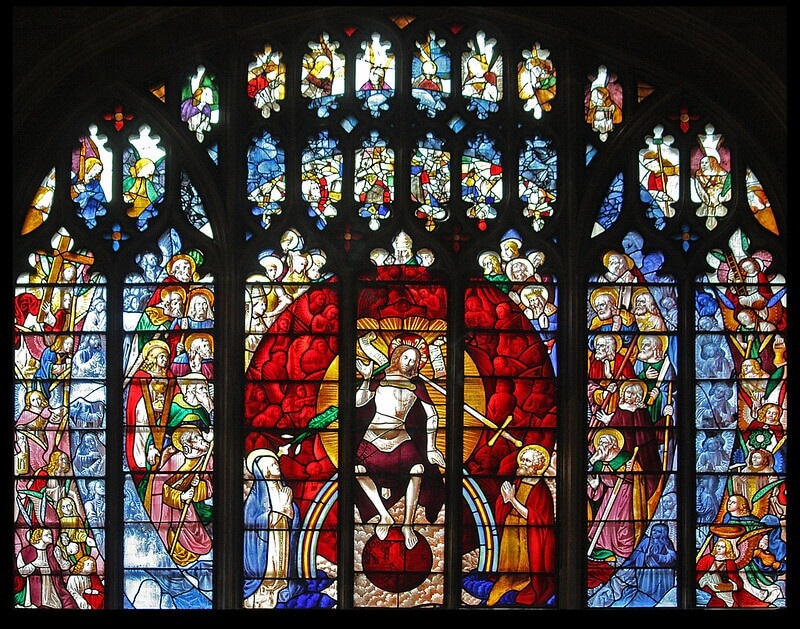
- Attend Mass with your family. November 1st is a Holy Day of Obligation!
- Enjoy a special meal with loved ones. If November 1st is on the weekend this year, you could make a big brunch after Mass featuring traditional Catholic and Autumnal foods. If it’s on a weekday, you could do something similar for dinner.
- Thank the saints for their intercession. If you have a home altar, adorn their altars and images with flowers, venerate their relics, recite special prayers and litanies in their honor. You can turn your dining room table into a focal point. All you need is a saint’s image, flowers, fall decor, and some candles.
- Read about the lives of the saints. You could pick a new patron saint for the year—or have a saint “chosen” for you with a saint name generator!
How to Celebrate All Souls Day:
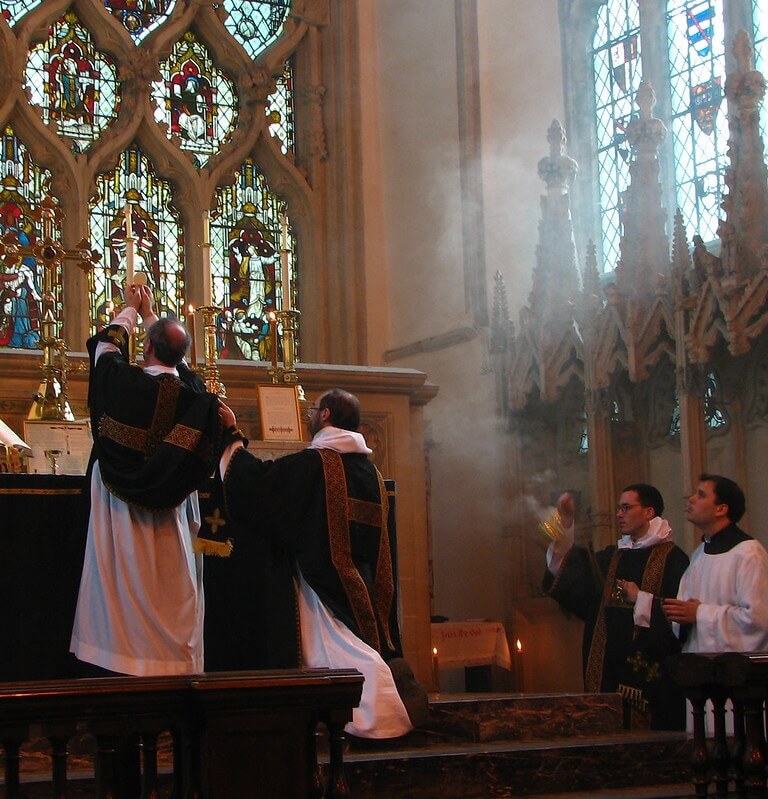
- Attend Mass for the Holy Souls in Purgatory and pray for them. Pray especially for deceased relatives.
- Learn about the various Poor Souls’ indulgences that are offered by the Church so that you can bring relief and consolation to the Poor Souls.
- Visit a cemetery. Walk through quietly and meditatively, pray for the people who are buried there, and sprinkle holy water on the graves. It has been suggested that these sacramental actions bring prompt consolation to the souls in purgatory. If you are able, visit the same cemetery each day (or a different local cemetery each day) for the traditional Octave of All Saints, November 1-8, as encouraged by this indulgence.
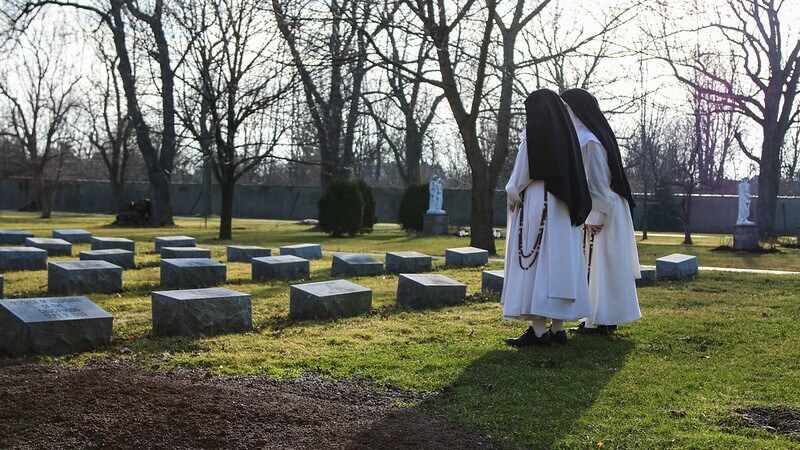
More Catholic Halloween Resources
Want to read more Halloween facts?
Each of the great articles below go in-depth on the above points and offer more historical insight into the Catholic festival of Halloween:
>> Should Catholics Celebrate Halloween?
>> Is Halloween a Pagan Festival
>> It’s Time for Catholics to Embrace Halloween
>> Is Halloween the Devil’s Day?
>> Halloween: Don’t Be Spooked, It’s Catholic
>> Taking Back Our Holy Halloween
Can demons read your thoughts?
Are Catholics allowed to believe in ghosts?
Do people in purgatory know you’re praying for them?
Can your guardian angel influence your decisions?
We’re surrounded by invisible realities that we can’t ignore—so it’s important to have a healthy understanding of the spiritual world that God created. Learn the difference between Catholic belief and superstition when you sign up for the digital series Angels and the Supernatural.
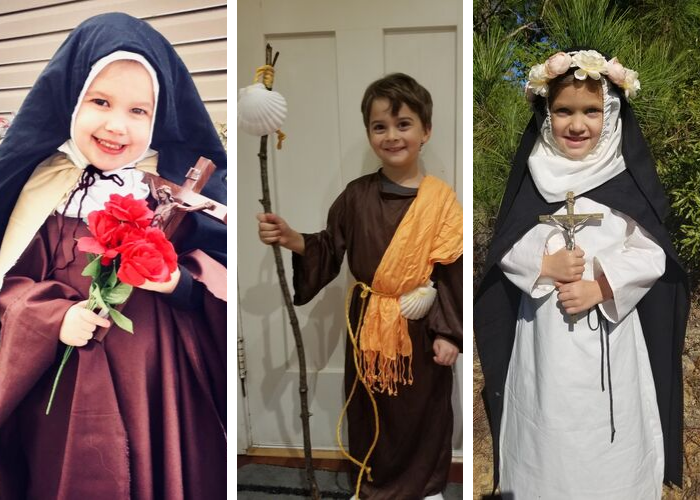
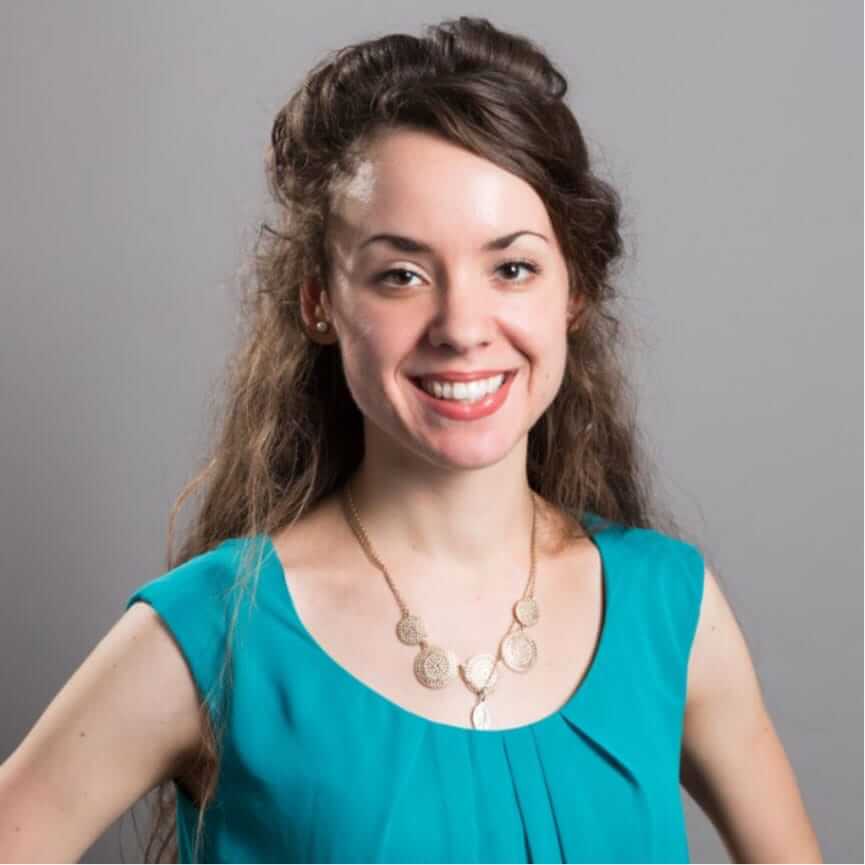
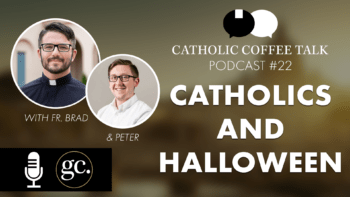
![The Catholic Book I Refused to Read: Hungry Souls [A Review]](https://www.goodcatholic.com/wp-content/uploads/2021/11/the-catholic-book-i-refused-to-read-hungry-souls.jpeg)
